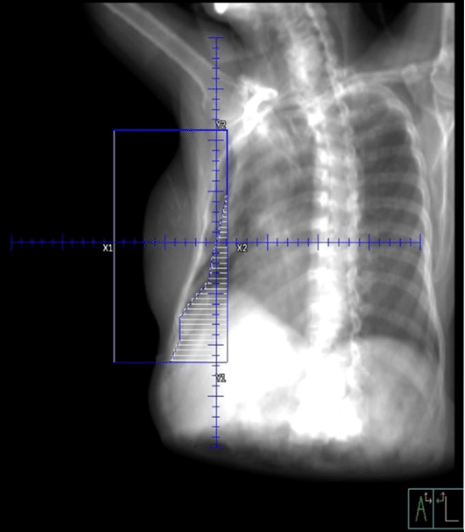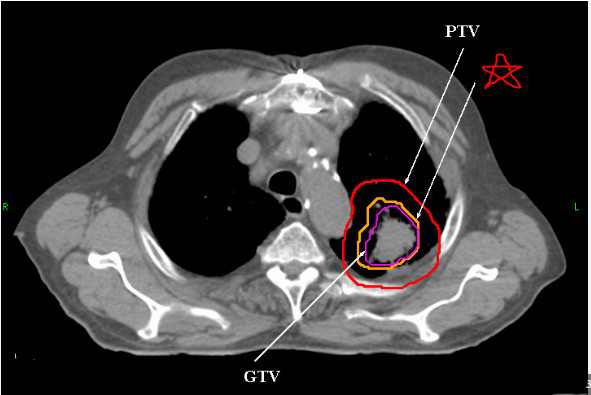
DRR
This lobe of the lung experiences the greatest displacement due to respiratory motion.
The lower lobe
The simplest way to handle respiratory motion is expanding your margins to use this "ME" technique.
Motion Encompassing
This term describes motion or variation in position that occurs between different treatment sessions.
Interfraction
When explaining breathing instructions to a nervous patient, speaking in this manner helps them breathe more naturally.
Slowly/Calmly

ITV
Intrafraction motion can be caused by the respiratory, skeletalmuscular, cardiac and this system.
Gastrointestinal
This technique uses an external surrogate to turn the beam on and off at specific points in the breathing cycle.
Respiratory Gating
Changes in target position occurring during a single treatment session are described by this term.
Intrafraction
This technology enables communication with and monitoring of the patient during treatment.
A/V System
This respiratory management technique requires the patient to hold their breath while an air flow valve temporarily restricts their breathing.
ABC
Beyond respiratory motion, radiation to the left breast must account for this specific type of motion, which occurs 60-100 times per minute.
Cardiac Motion
This common management technique can be either voluntary or coached using ABC, requiring patients to temporarily pause their breathing.
Breath Hold
This device measures the volume of air being inhaled or exhaled by the patient during breathing.
Spirometer
You can't use the simulation technique during treatment - quick, identify if the issue is technical, anatomical, or this key factor.
Patient Compliance
In 4DCT, this three-letter reconstruction shows the brightest value each pixel achieves throughout the breathing cycle, making it useful for determining the full extent of tumor motion.
MIP
This male organ can move up to 1.5 cm during treatment due to bladder filling, rectal gas, and skeletal muscle tension.
Prostate
Compressing the abdomen to limit diaphragm excursion is one way to achieve this "FSB" technique.
Forced Shallow Breathing
In respiratory motion, this ratio describes the percentage of time the beam is turned on during gated treatment.
Duty Cycle
When free breathing, the target moves during treatment, making this type of highly modulated plan riskier than simple beams.
IMRT
Unlike its "maximum" counterpart, this type of 4DCT reconstruction represents the mean CT number at each pixel over all phases of the respiratory cycle.
AIP
This thoracic target can see up to 5cm of motion during deep breathing, yet paradoxically moves less in the supine position than prone.
Diaphragm
Unlike gating, this "RS" technique continuously adapts the beam delivery to follow the tumor's position throughout the respiratory cycle.
Respiratory Synchronization
****DAILY DOUBLE****
The difference in tumor position for the same phase during inhalation versus exhalation demonstrates this physics phenomenon.
Hysteresis
While a MIP provides useful information for extent of lung tumor movement, a MinIP provides extent of motion information for this type of tumor.
Hypodense/Liver